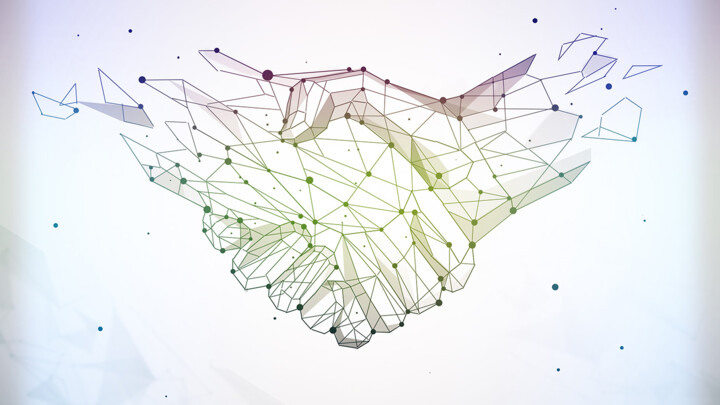The Core of Digital Trust: Encryption, Identity, and Integrity
In the digital landscape, Simone Catania from InterNetX emphasizes how trust is pivotal, ensuring secure transactions with encryption, identity verification, and integrity amidst rising security threats.

©Peshkova | istockphoto.com
In the complex web of the digital economy, trust is the cornerstone that enables secure transactions, communications, and interactions. As threats to digital security evolve and expand, understanding and implementing digital trust has never been more critical.
Establishing digital trust is not merely a matter of securing data, but of establishing a bond between technology and the human elements of ethics, privacy, and reliability. Three core elements are at the heart of this vital aspect of our digital existence: encryption, identity, and integrity. Encryption safeguards our data, cloaking it in a veil of secrecy that prevents unauthorized access. Identity verification ensures that entities involved in digital interactions are who they claim to be, establishing a foundation of trustworthiness. Integrity verifies that the information remains unaltered and authentic from its source to its destination.
Together, these elements create a secure framework that underpins the reliability and safety of digital systems, making them indispensable in maintaining the fabric of digital trust. Let’s take a more detailed look.
What is digital trust?
Digital trust is the confidence instilled in users and businesses by robust security practices that protect online interactions and data transactions. It encompasses encryption, authentication, and compliance standards, forming a reliable framework that enables secure digital ecosystems. Essential for operations in an interconnected world, it reassures all parties of the integrity and confidentiality of their online dealings, allowing for the sustainable growth of Internet-based commerce and communication.
Digital trust is the backbone of the Internet
Digital trust is essential for digital commerce, communication, and innovation to flourish on the Internet.
Businesses must prioritize secure online interactions, especially with the ongoing surge in e-commerce. Projected worldwide e-commerce sales are anticipated to reach $6.33 trillion in 2024 and are expected to grow in the following years, making digital trust more crucial than ever. The disturbing increase in data breaches underscores this need. During Q4 of 2023, data breaches exposed more than eight million records worldwide, making it the biggest concern of companies worldwide. DNS abuse, such as phishing or malware distribution, undermines user security and trust, but digital trust mechanisms can restore confidence by ensuring that Internet navigation remains safe and authentic.
Establishing digital trust is critical to maintaining customer loyalty and protecting brands. It also provides a competitive advantage, often influencing a customer’s choice of products or services. It’s built on transparent practices, strong cybersecurity, and a clear commitment to protecting user data. Digital trust also fuels the growth and innovation of the entire Internet industry. It allows for the smooth exchange of information and supports new technologies like blockchain and IoT, enhancing consumer confidence in digital services. Without it, the foundations of e-commerce, online banking, and social media could weaken, risking the security and privacy of users worldwide.
The three pillars of digital trust
At the heart of digital trust lie three fundamental elements: encryption, identity, and integrity. Let’s delve into these three core elements of digital trust to comprehend their role in fortifying digital security.
#1 Encryption: securing the digital world with ciphers
At its core, encryption transforms readable data into an unintelligible format to protect it from unauthorized access, ensuring privacy and security in the digital world. There are two main types of encryption: symmetric, where the same key is used to encrypt and decrypt the information, and asymmetric, which involves a pair of keys – a public key for encryption and a private key for decryption. This duality allows for a secure data exchange, even over unsecured channels.
Crucial to this architecture are TLS/SSL certificates, which establish an encrypted link between a web server and a browser, ensuring that all data transferred remains private and intact. Similarly, S/MIME certificates provide a way to secure email communications by encrypting the content and attaching a digital signature, verifying the sender’s identity and ensuring the message has not been tampered with. Implementing TLS/SSL and S/MIME certificates reinforces the significance of encryption in upholding trust and privacy in our increasingly connected world.
#2 Identity: anchoring trust with authentication
Digital identity forms the backbone of trust in the virtual world, allowing for secure interactions by ensuring that parties are who they claim to be. This trust is cultivated through various digital identity verification methods, beginning with traditional passwords and evolving into more sophisticated forms such as two-factor authentication (2FA), for which a second piece of evidence – often a mobile device – is required for access. Further strengthening this trust are biometric verifications that analyze unique personal features, making identity theft increasingly challenging.
Digital certificates, reinforced by a public key infrastructure (PKI), serve as digital passports, providing encrypted channels and authenticating the identities of those involved in online exchanges. Among these, document signing certificates emerge as vital tools in identity management. They offer an additional layer of security for the validation of identity by electronically signing documents and affirming authorship and document integrity.
#3 Integrity: ensuring data is trustworthy and unaltered
Data integrity is the assurance that information can be relied upon to be accurate, consistent over its lifecycle, and unaltered from its original state – a foundational element for digital trust. Mechanisms such as hashing algorithms help protect data integrity. These algorithms create a unique fingerprint for each piece of data. Even a tiny change to the data will produce a completely different hash, which alerts us to possible tampering.
Code signing certificates are crucial to ensure integrity in software distribution. They assure end users that the software they download has not been corrupted or tampered with since the developer signed it. This is a critical factor because data integrity is not a mere technical necessity, but the currency of digital trust.

Future trends and challenges of digital trust
Maintaining digital trust in an age marked by the increasing sophistication of cyber threats presents a challenge. As hackers employ more advanced techniques, safeguarding data integrity and privacy while ensuring robust security becomes more complex. This delicate balance is further complicated by the evolving legal and regulatory landscapes that vary across jurisdictions, adding layers of complexity to global operations.
By adding advanced technologies such as quantum cryptography, which offers an almost perfect level of encryption, and implementing the use of self-sovereign identity models that let people manage their digital identities, we’re seeing the emergence of exciting new developments in security and privacy. Using AI and machine learning to predict and prevent security threats before they happen can change our digital defense strategies.
However, we need extensive global cooperation to successfully merge these new technologies with current systems. Addressing standardization challenges and ensuring the reliability of these novel solutions across diverse platforms demand efforts to adapt and evolve quality assurance and regulatory frameworks.
The future of digital trust depends on our ability to blend innovation with worldwide standards, ensuring that security and encryption advances come together to form a strong, global digital infrastructure.
Solidifying the foundations of digital trust
The intertwined concepts of encryption, identity, and integrity form the cornerstone of digital trust. They ensure secure, reliable interactions in the ever-evolving cyberspace.
This dynamic landscape demands that organizations and individuals adopt and strengthen their digital trust frameworks. It is pivotal to embrace advanced security measures like TLS/SSL, S/MIME, code signing and document signing certificates. Furthermore, staying abreast of emerging technologies and fostering a culture of privacy and security are essential steps in this journey.
Simone Catania currently serves InterNetX as Global Content and Communications Manager. He is responsible for the content across InterNetX's blog and other channels and helps users understand the underpinning mechanisms behind the Internet. Simone is an ICANN fellow and member of EURALO and UASG.
Please note: The opinions expressed in Industry Insights published by dotmagazine are the author’s or interview partner’s own and do not necessarily reflect the view of the publisher, eco – Association of the Internet Industry.




